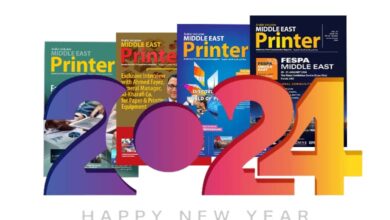Digital Marketing or Face-to-Face Marketing?

The battle for customer engagement starts with marketing
According to some estimates, the global commercial printing market size was valued at USD 489.63 billion in 2022 and is anticipated to grow at Compound Annual Growth Rate (CAGR) of 2.8% from 2023 to 2030. However, some pundits believe these numbers are too optimistic and the real growth rate is as low as 1.7%.
Slow growth in commercial printing industry during last decade has pushed printers to diversify and intensify their marketing activities. Printers now are searching for new solutions to generate more revenues and stay afloat. One solution is to intensify marketing activities. But there is a dilemma: should they opt for more digital marketing or face to face marketing?
Face to face marketing or digital marketing?
Face-to-face marketing and digital marketing are two different approaches to promoting products and services. While both methods aim to reach potential customers, they differ in their approach and effectiveness.
Face-to-face marketing, also known as experiential marketing, involves direct interaction with potential customers. This can take the form of trade shows, events, and product demonstrations. The primary advantage of face-to-face marketing is the ability to create a personal connection with potential customers. By engaging with customers directly, businesses can answer questions, provide demonstrations, and build trust. This can be particularly effective for products or services that require a more personal touch or have a higher price point.
However, face-to-face marketing has its limitations. It can be expensive to attend trade shows or events, and the reach is often limited to the number of people who attend. Face-to-face marketing also requires a significant investment of time and resources, which can be challenging for small businesses with limited budgets.
Digital marketing, on the other hand, involves promoting products and services through digital channels such as social media, email, and search engines. The primary advantage of digital marketing is the ability to reach a larger audience. With the majority of people spending more time online, businesses can use digital channels to reach potential customers where they are spending their time. Digital marketing also offers greater flexibility and precision in targeting specific demographics, interests, and behaviors. This allows businesses to create targeted marketing campaigns that are more likely to resonate with their target audience.
However, digital marketing has its own set of challenges. The constant evolution of digital platforms and algorithms can make it difficult for businesses to keep up with the latest trends and technologies. Additionally, digital marketing can be impersonal, which can make it harder to build trust with potential customers.
Face-to-face marketing and digital marketing are two different approaches to promoting products and services. While face-to-face marketing offers the opportunity to create a personal connection with potential customers, it can be expensive and time-consuming. Digital marketing offers greater reach and precision but can be impersonal. Ultimately, businesses should consider their goals, target audience, and budget when deciding which approach to use. A combination of both face-to-face and digital marketing may offer the most effective solution for reaching potential customers and growing a business.
More marketing is not enough to compensate slow growth
There is no doubt that the printing industry has always been subject to fluctuations. However. the current trend of slow growth is a cause for concern for many businesses. That is why intensifying marketing activities is not enough to compensate slow growth.
One of the main reasons for slow growth in the commercial printing industry is the rise of digital media. As more businesses move towards digital marketing and advertising, the need for printed materials has decreased. This shift has had a significant impact on the commercial printing industry, with many businesses cutting back on printed materials such as brochures, flyers, and catalogs.
Another reason for slow growth in the commercial printing industry is the increase in competition. With the rise of online printing services and the ability for businesses to print materials in-house, many traditional printing businesses have struggled to stay competitive. This has resulted in lower profit margins and reduced growth opportunities for many businesses in the industry.
Despite the challenges facing the commercial printing industry, there are several solutions that businesses can consider to increase growth and stay competitive.
Embrace digital technology: While digital media has had a negative impact on the commercial printing industry, businesses can leverage digital technology to their advantage. By investing in digital printing technology, businesses can offer a wider range of services, including personalized printing and variable data printing. This can help differentiate their services from online printing services and attract more customers.
Diversify services: In addition to investing in digital technology, businesses can also consider diversifying their services. By offering services such as graphic design, mailing services, and promotional products, businesses can provide a comprehensive solution for their customers’ marketing needs. This can help increase customer loyalty and attract new business.
Focus on customer service: With increased competition, businesses that focus on exceptional customer service can stand out from the competition. By providing a high level of service, businesses can build long-term relationships with their customers and increase the likelihood of repeat business.
Target niche markets: Rather than trying to compete with online printing services on price, businesses can target niche markets that require specialized printing services. This can include industries such as healthcare, education, and nonprofit organizations, where there is still a high demand for printed materials.
Printing is a resilient industry and despite challenges printers have been able to raise their game and rise to the occasion. Printing industry is here to stay.






One Comment